External hard drives are common storage devices in our daily lives, used for backing up data, transferring files, or storing large amounts of multimedia content.
However, many users often encounter a frustrating problem when using external hard drives: extremely slow transfer speeds. This not only wastes time but also impacts work efficiency and data management.
So, what causes this problem? And how to increase transfer speed of external hard drive? Read on to find out.
Why Is the External Hard Drive Transferring So Slow
The common causes of the “external hard drive transferring so slow” issue include the following items.
1. Hardware and connectivity issues.
- Cable or port failure: Damaged or poor-quality USB cables and unstable ports can limit transfer speeds.
- USB version: If you are using an older USB 2.0 port while your external hard drive supports USB 3.0 or later, transfer speeds will be limited.
- Hard drive medium: If your external drive is an HDD, it’s slow by nature. Moreover, if it uses SMR technology, its write speed will be slower than that of a regular external HDD. This is because SMR uses an overlapped track design, which makes the write operation more complex.
2. Drive and file issues.
- Insufficient storage space: Performance is affected when the external hard drive is nearing full capacity.
- Fragmentation: Severe disk fragmentation, especially on external HDDs, can affect read and write speeds.
- SSD cache: External SSDs have a cache to improve the write speed. Make sure it is enabled. In addition, the cache will become full due to a large number of write operations. Then, the external drive will become slow. To solve the issue, you need to delete files from the external drive.
- Too many small files: Transferring small files of the same size is much slower than transferring a single large file of the same size because transferring each small file requires additional operations. Furthermore, storing a large number of small files causes frequent movement of the read/write head, reducing sequential read/write efficiency.
- File System: Each operating system has optimal support for certain file systems. For example, Windows systems’ NTFS and macOS systems’ APFS and HFS+. If your external disk uses exFAT, it won’t get optimal transfer speeds under either of these operating systems.
- Bad sectors: Bad sectors prevent the external hard drive from reading or writing properly in certain areas, impacting overall speed.
3. Computer and software factors.
- Outdated disk drivers: Outdated external disk drivers can lead to inefficient communication between the computer and the external hard drive, resulting in slower transfer speeds.
- Background applications: When writing files to an external hard drive, if multiple programs are running in the background at the same time, the transfer speed will be slowed down, because these programs will consume resources.
- Malware infection: Viruses or malware can cause external hard drive performance degradation.
Having understood the common causes, let’s look at how to solve the problem of slow external hard drive transfer speeds. Here are some simple and effective solutions.
Basic Troubleshooting Methods
Fix 1: Change the Cable and USB Port
Please use the data cable that came with the external drive to transfer data. If you have done so, use another USB port to check if the issue can be solved.
If you must use a different data cable, please ensure that the data cable is perfectly compatible with this external drive and supports the maximum transfer speed and all functions of the external drive.
Fix 2: Close Other Applications
When transferring files, if many applications are running simultaneously, especially those that consume significant CPU or disk resources, they can slow down external hard drive read and write speeds.
To improve transfer speed, you can close these applications using Task Manager. Here’s how:
Step 1: Right-click the taskbar and select Task Manager.
Step 2: Right-click a process and select the End task button.
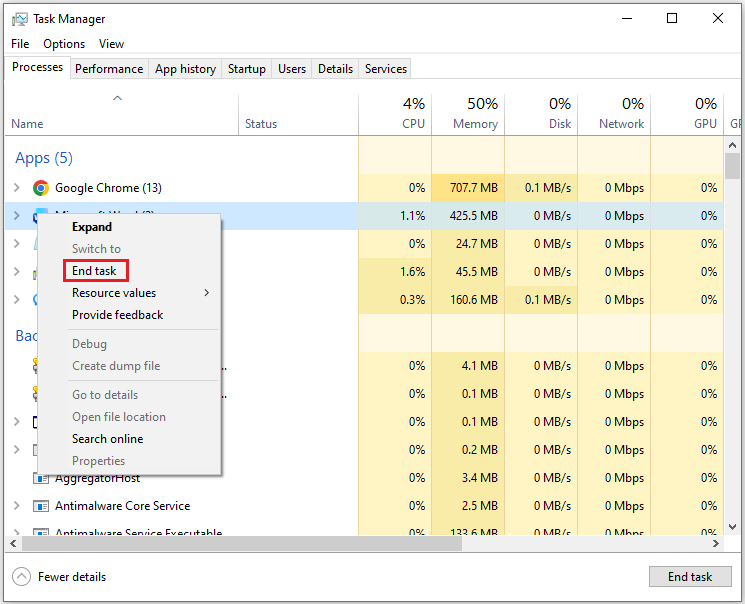
Fix 3: Free up Space
Insufficient free space on the external hard drive will affect the file transfer speeds. You need to delete some files. In addition, the file deletion behavior can also relieve the full SSD cache issue.
You can use File Explorer to delete unnecessary files. Here are the detailed steps:
Step 1: Click the File Explorer icon to open it, then select your external hard drive from the left side.
Step 2: Choose a file you want to delete and click the Delete icon at the top.
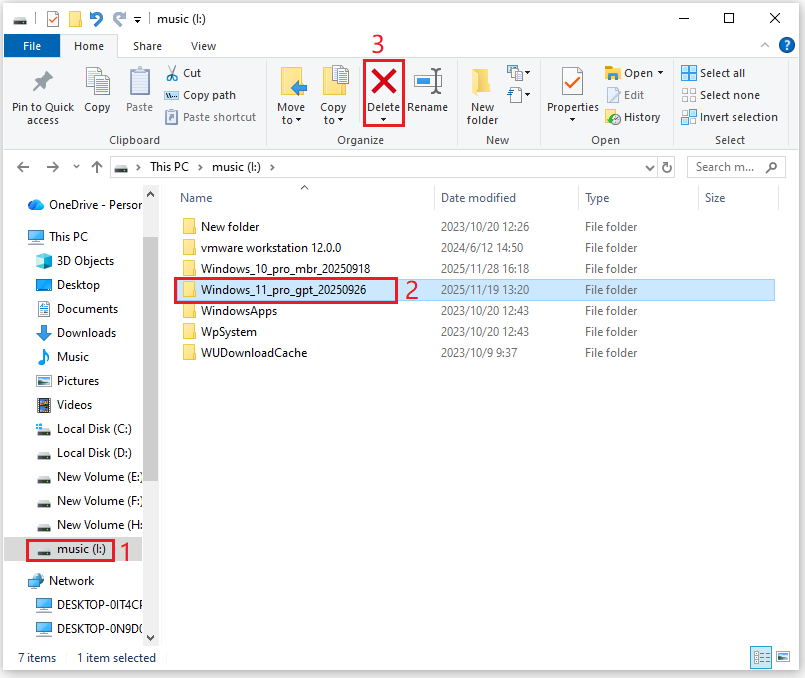
Fix 4: Update Disk Drivers
Outdated disk drivers can affect external hard drive performance. You can check if there are any driver updates available.
Step 1: Right-click the Start icon and choose Device Manager.
Step 2: On the Device Manager window, expand Disk drivers, right-click the external hard drive, and then choose Update driver.
Step 3: Select Search automatically for drivers and follow the on-screen instructions to complete the process.
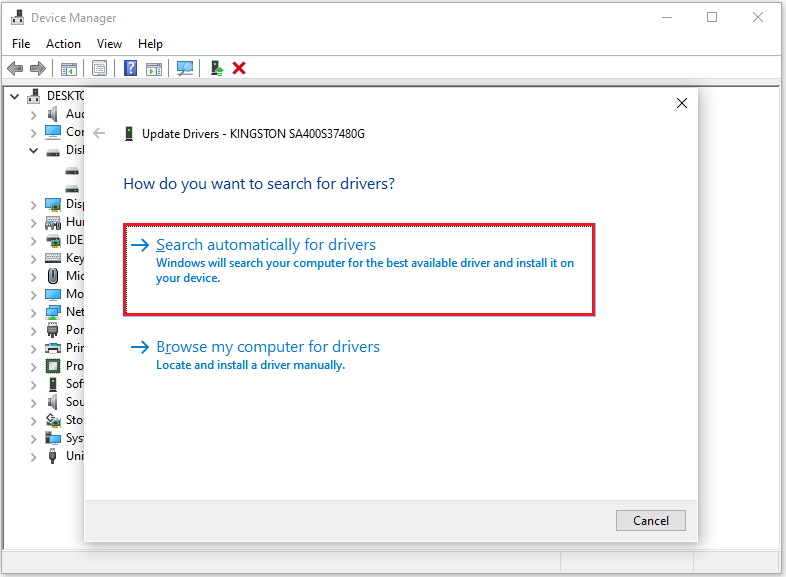
Advanced Troubleshooting Methods
After mastering the basic troubleshooting methods, we can delve into more complex scenarios.
The following content will introduce more advanced troubleshooting techniques to help you solve the problem of your external hard drive transferring data so slowly.
Fix 1: Scan for Viruses
Viruses or Trojans can cause external hard drive read/write errors and slowdowns. It is recommended to use antivirus software to perform a full virus and malware scan on the external hard drive to ensure the system and hard drive are safe.
Here are the steps:
Step 1: Press Windows + I to open Settings.
Step 2: Go to Update & Security > Windows Security.
Step 3: Choose Virus & threat protection in the Protection areas section.
Step 4: Click Scan options.
Step 5: Choose Full scan and click the Scan now button.

Fix 2: Optimize the External Hard Drive
On an external hard drive, a large number of fragmented files can affect read and write efficiency. It is recommended to perform disk optimization to improve external hard drive performance.
Here are the steps to use Windows’ built-in tools to defragment an external hard drive.
Step 1: Open File Explorer and then choose This PC.
Step 2: Right-click the external hard drive to choose the Properties option.
Step 3: Go to the Tools tab and then hit the Optimize button.

Step 4: Select the external hard drive to defrag, click the Optimize button, and wait for the process to complete.
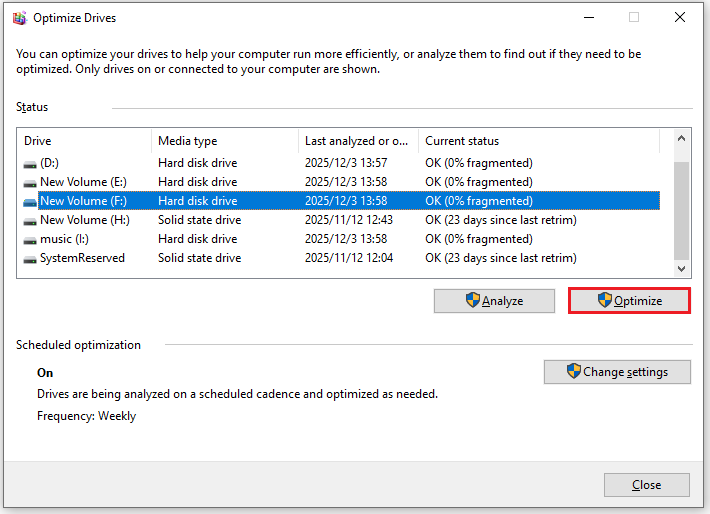
Fix 3: Format the External Hard Drive
Different file systems vary in read/write efficiency and compatibility, and prolonged use can lead to file system corruption, fragmentation, or structural disorder, thus degrading the performance of external hard drives.
By formatting and selecting a file system more suitable for the system (such as NTFS used by Windows), the file structure can be rebuilt, fragmentation and errors cleared, thereby restoring or even improving the hard drive’s read/write speed.
Here’s how to format it on a Windows PC:
MiniTool Partition Wizard FreeClick to Download100%Clean & Safe
Step 1: Launch MiniTool Partition Wizard, locate the external hard drive on the disk map, right-click it, and select Format.
Step 2: On the pop-up window, choose the correct file system and click the OK button.
Step 3: After selecting the appropriate file system (e.g., NTFS), confirm that the external hard drive partition is set correctly. Then click Apply > OK to proceed with formatting.
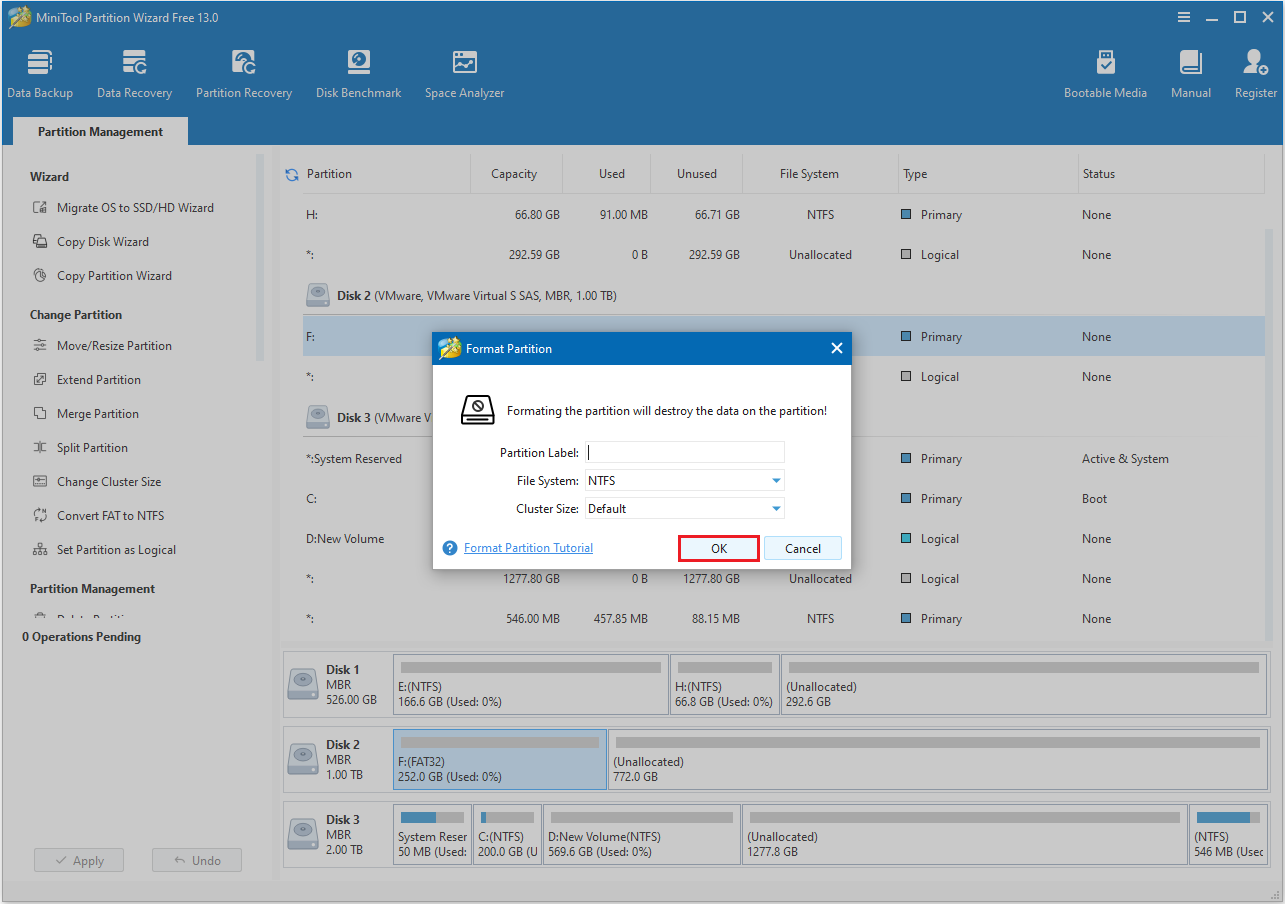
After formatting, reconnect the external hard drive and check if the file transfer speed has improved.
Fix 4: Enable Write Caching in Windows
Enabling write caching for external hard drives in Windows allows the system to temporarily store data in memory before writing it to the disk in batches, significantly improving write speed and overall performance.
Step 1: Right-click the Start icon and choose Device Manager.
Step 2: Expand the Disk drives, right-click on the external hard drive, and select Properties.
Step 3: Go to the Policies tab and check the box for “Enable write caching on the device”. Then, click OK to save the changes.
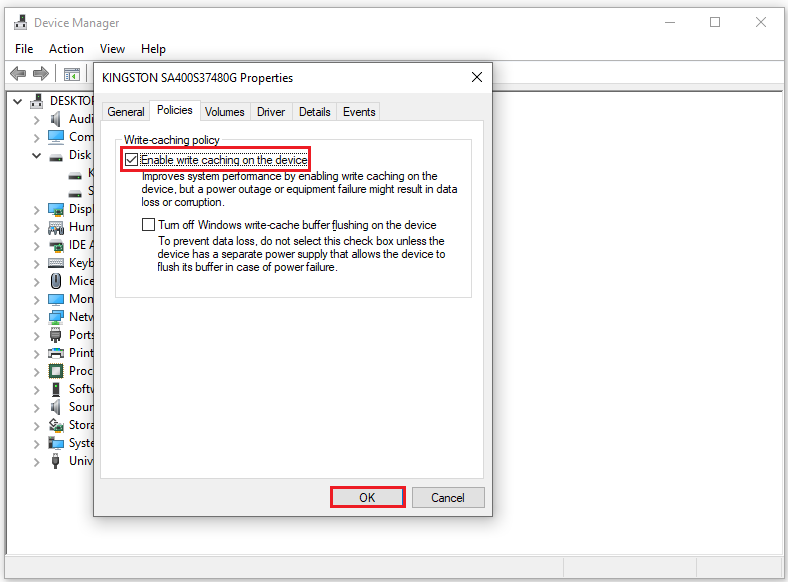
Fix 5: Check for Disk Errors
To determine if the problem lies with the external hard drive, you can use MiniTool Partition Wizard. Its Surface Test feature allows you to scan the external hard drive for bad sectors.
Step 1: Open MiniTool Partition Wizard to its main interface.
Step 2: Right-click the external hard drive to select Surface Test.
Step 3: Click the Start Now button to start the disk surface test.
Step 4: After scanning, disk blocks without read errors will be marked in green, while those with read errors will be marked in red.
If the scan results indicate a small number of bad sectors, you may use the chkdsk *: /r command to map out and block those sectors. If the external hard drive contains too many bad sectors, replacing it with a new external hard drive is recommended.
External Hard Drive Transferring So Slow FAQ
If your device is only used on a Mac, choosing macOS’s native APFS or HFS+ will provide faster and more stable read and write speeds.
If you need to read and write between Mac and Windows simultaneously, exFAT offers the best compatibility, but its transfer speed is generally slower than using the native file system of each system.
Bottom Line
In summary, slow external hard drive transfer speeds can be caused by a variety of reasons, including interface issues, external hard drive health, file system problems, fragmentation, and malware corruption.
Most performance issues can be improved by checking the USB interface, using health check tools, defragmenting, and performing virus scans.
If these steps do not significantly improve speed, the external hard drive itself may be aging or damaged. In this case, you should back up your data and replace the external hard drive immediately.
If you have any questions or suggestions while using MiniTool Partition Wizard, you can contact us via [email protected] for further assistance.

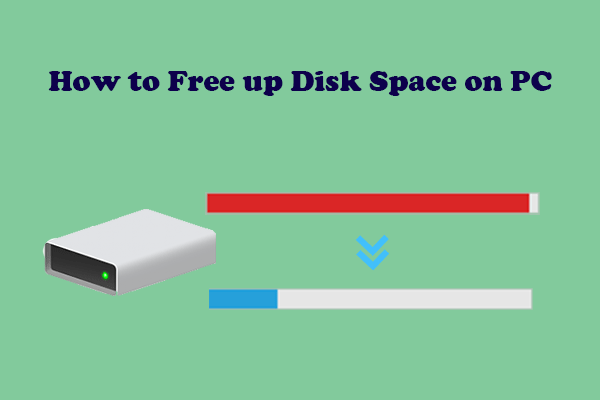
User Comments :